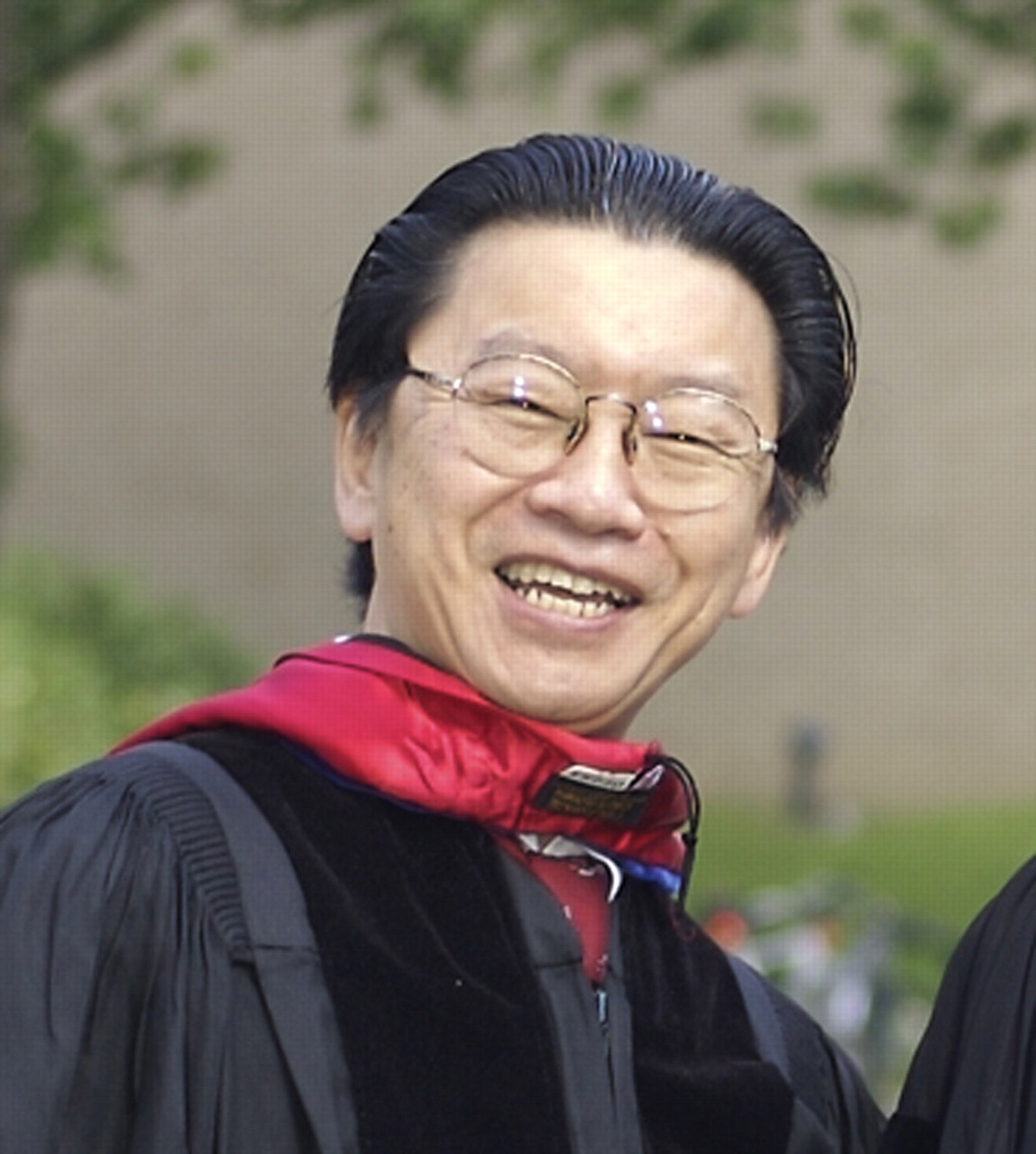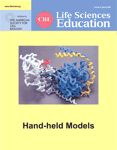Ron Hoy
Abstract
Note from the Editor
Educator Highlights for CBE—Life Sciences Education show how professors at different kinds of institutions educate students in life sciences with inspiration and panache. If you have a particularly creative teaching portfolio yourself, or if you wish to nominate an inspiring colleague to be profiled, please e-mail Laura Hoopes at [email protected].
Ron Hoy, HHMI Professor of Neurobiology and Behavior, Cornell University, Ithaca, NY
LH: Ron, for a research university professor, you make unusually strong connections between teaching and research. You seem to feel there's a synergy there that others don't always see. Am I right?
Hoy: Yes, I always have felt that. Back at Stanford, when I was a graduate student, my Ph.D. supervisor was Don Kennedy, the recent editor-emeritus of Science magazine. Don took teaching very seriously. He lectured in introductory biology for many years and then helped found the human biology program. Don really enjoyed his teaching and he worked at it very hard. We didn't think he was modeling how a scientist should act back then, but he was! Farther back, at the end of my college years at Washington State University, I was recruited into doing undergraduate research by the physiologist Len Kirschner. It turned out to be a wonderful and fantastic opportunity for me. Len put us—all of us—on our research projects. He didn't see any reason why an undergraduate student couldn't have good ideas and think like a scientist.
Then when I was working on my Ph.D. dissertation with Kennedy, my research was on regeneration in the crayfish nervous system. I always thought, “Wouldn't the crayfish system be a neat thing to do in a teaching lab? I love doing this, and it's so EASY.” Later, when I saw the research projects of the students, I wondered if we could put all of them into a student teaching lab. So I grew up in science not seeing a distinction between teaching and research.
LH: Have you noticed a trend toward decreasing the laboratory work for science majors?
Hoy: In large universities, the number of lab courses has decreased. One venue where there are still a lot of good lab courses is in liberal arts colleges. National Science Foundation (NSF) studies have shown that liberal arts colleges have been historically more productive of scientists than many top universities, and I can't help but wonder if it's not due to the quantity and quality of the laboratory experiences in the liberal arts colleges. When I was an undergraduate, every course had a lab, but now universities often separate lecture courses and labs and make lab optional. I despair that labs are decreasing this way. However, there seems to be hope for change on the curricular horizon. The NSF and the Howard Hughes Medical Institute (HHMI) have been encouraging faculty to create lab courses to go along with a more inquiry-directed curriculum. My HHMI Professors project is aimed, in part, on developing laboratory modules for undergraduate laboratories.
LH: I saw that you produced CRAWDAD and now you're working on FRUITFLY. Are those computer simulations?
Hoy: No, they are open-ended lab exercises. My firm belief is that students need to get in there and work, hands-on, with the live organisms. The labs are mini-research projects that may extend over several lab periods. This gives students a chance to become familiar with an experimental system, learn basic techniques and, building on these basics, extend their inquiry, and test their own hypotheses. In so doing, they could even produce new knowledge. That's an instrumental thrill that is hard to reproduce on a computer simulation.
LH: CRAWDAD has been around a while, about five years or so. I've heard very good things about it. But tell me something about your new one, FRUITFLY.
Hoy: Laura, HHMI is supporting me to develop an interdisciplinary set of modules. You can use them to add a behavior/neuroscience aspect to a genetics course, or you can use them to add genetics to a neurobiology or ethology course. Let's talk about genetics labs. Many genetics labs are based on that workhorse, Drosophila melanogaster. Students typically investigate mutants that present altered anatomical traits like eye color, body color, bristle morphology, wing structures, or maybe developmental mutant strains like the homeotic line, antennapedia, where leg-like structures appear on the head, instead of antennae. What's different about FRUITFLY is that we've designed interesting labs using behavioral mutants, where the defect presents as a conspicuously altered behavioral trait.
One example we're working with is a type of Drosophila model of human epilepsy. The mutated flies look normal, but they can be induced to have seizures. Different mutant lines, when stimulated by a strobe light, electroshock, or mechano-sensory input respond with a seizure. These behavior-identified mutants can be studied from a psychophysical stimulus/response threshold point of view, a genetic point of view, or a physiological point of view. These flies permit you to “turn on” the equivalent of a grand mal seizure: The fly will spin like a top, or fly upside down, or shake violently and fall down, “unconscious.” After many seconds, the fly recovers and behaves normally again. The students can also make physiological recordings from these flies, even during the actual seizure, the electrical “brainstorm.” Students are intrigued because this is real-world “stuff.” In this kind of lab the sky's the limit, the ultimate in open-endedness. The students have the opportunity to perform “discovery science,” using these flies. It can give students a sense of empowerment.
LH: Could you give me another example?
Hoy: Another example is Dr. Ulrike Heberlein's alcohol-sensitive flies. She has generated alcohol-sensitive flies that her lab has given names like “barfly” and “cheapdate.” You probably know that Drosophila geneticists compete to give their mutants the cutest names! These strains of flies get “drunk” on tiny concentrations of alcohol compared with wild type. So they're considered alcohol intolerant. The students offer them different concentrations of ethanol in lab. Although one must be careful when working with underage undergrads, one can bring a sample of sherry, scotch, wine of different kinds, or beer. We can use them on the alcohol-sensitive flies. It makes the topic real and immediate for the students, builds on genuine student interest. And then, there are other sensory mutants that are blind or deaf and so forth. Lots of possibilities.
LH: If someone wants to use these modules, how do they get directions? Can they get the flies you actually worked with?
Hoy: FRUITFLY? My group is working on it. The Drosophila Genetics Stock Center in Indiana might start a section with education stocks, maybe even kits. Or, perhaps we could work with Carolina Biological to make them available. The directions are going to be like CRAWDAD, on a CD, or online. They will be easily available and widely disseminated, as HHMI encourages us to do once we develop the materials.
LH: I know you're concerned about increasing the mathematical knowledge of biologists and neurobiologists
Hoy: I sure am. I am very concerned about the weak math skills some students have when they are graduated. We need to do a better job. In fact, my group is also working on another module based on the application of game theory to decision-making behavior. Examples include the classic “prisoner's dilemma” situation. I think we need to offer more opportunities for students to work across disciplines, using math to study biology. Campbell and Heyer's textbook on genomics is a great example of what could be done at the undergraduate level, but unfortunately it's not a common one, yet.
LH: Thanks so much for telling CBE-LSE your ideas about education, Ron.



